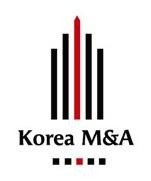| 일 | 월 | 화 | 수 | 목 | 금 | 토 |
|---|---|---|---|---|---|---|
| 1 | 2 | 3 | 4 | |||
| 5 | 6 | 7 | 8 | 9 | 10 | 11 |
| 12 | 13 | 14 | 15 | 16 | 17 | 18 |
| 19 | 20 | 21 | 22 | 23 | 24 | 25 |
| 26 | 27 | 28 | 29 | 30 | 31 |
- Merger
- China Construction Bank
- Letter of intent
- OTCBB
- hong kong
- Malaysia
- securities
- LOTTE
- Bank
- private equity
- Korea M&A
- LOI
- sk
- China
- acquisition
- capital gate
- cgi korea
- Japan
- Acquistion
- PEF
- Japan Tobacco
- Investment
- Confidential Agreement
- CA
- case study
- Korea
- M&A
- buyout
- taiwan
- nda
- Today
- Total
Korea M&A Corporation
Asian M&A 본문
A mergers and acquisition boom in emerging Asia has been long promised. Will 2007 be the year it actually materialises?
Although the number and value of deals in the Asia-Pacific region has risen fast, most M&A activity has been concentrated in Japan and Australia. There is much to discourage buyers from venturing further afield. Policy risks remain high, as the botched imposition of capital controls in Thailand or the Lone Star investigation in South Korea demonstrate. In many industries, particularly in China and India, foreign control is banned and ownership is restricted to minority stakes. Large numbers of companies continue to bow to the will of family or government owners – Morgan Stanley estimates that, in Asia-Pacific excluding Japan, families have meaningful influence over 40-50 per cent of publicly listed companies.
Buyers may choose to focus less on the obstacles, though, than on the opportunities. These abound. Corporate leverage is low. In Indonesia, for example, the ratio of net debt to book equity has fallen from 262 per cent during the Asian crisis to 37 per cent in 2005. Companies have used available cash to pay down debt, rather than invest aggressively in growth as they did before the crisis. Meanwhile, revenue growth, cost-cutting and disciplined capital expenditure have allowed returns on equity to rise to record mid-teen levels. Financing is also readily available. Low Asian interest rates and tight emerging market credit spreads make bond financing of M&A affordable. Domestic banks' loan-to-deposit ratio, in most markets, is low, and they are seeking lending opportunities. Finally, of course, there is the large global pool of uninvested private equity funds. Goldman Sachs, for example, has just closed a $6.5bn infrastructure fund, and has also said it intends to invest $1bn in India in the next few years.
Developing countries are desperate to upgrade their roads and ports; private equity is fighting over a shrinking pool of available assets. This time, rumours of an M&A boom do not look greatly exaggerated.
Copyright The Financial Times Ltd. All rights reserved.
